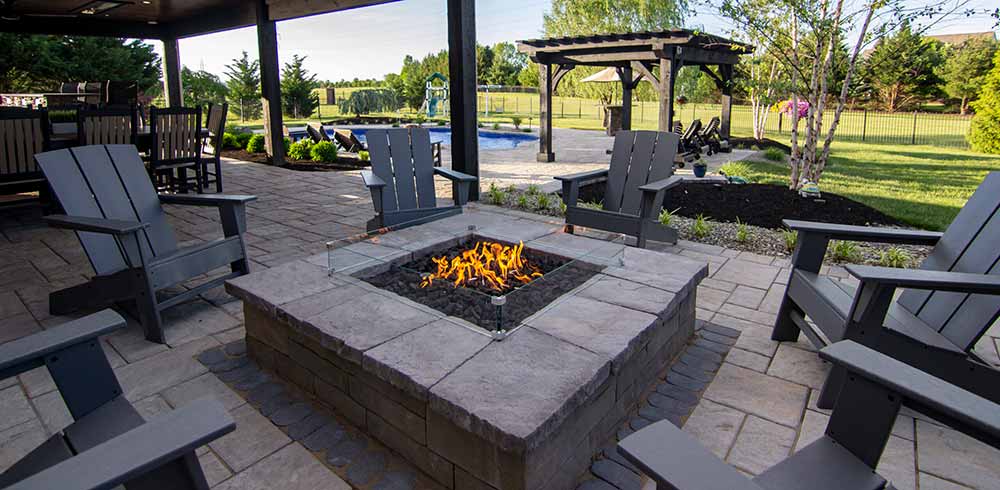
Building a fire pit doesn’t have to be complicated. We’ve put together this comprehensive guide to show you how to turn your dream backyard fire feature into a reality. This fire pit kit buying guide will cover everything you need to consider before you make your first purchase from us. When you’re finished, you’ll have all the information you need to start exploring our best fire pit kit options.
At a glance, the steps are as follows:
- Determine Your Budget
- Check Your Local Building Codes
- Decide on Your Fuel Supply
- Plan the Size & Shape of Your Fire Pit
What to Consider When Designing Your Fire Pit


Determine Your Construction Budget
Always be sure to create a budget for your fire pit project. Even if your numbers are only rough estimates, you should know what you want to spend on your fire pit before you get too far into the design stages. Fire pit kits can vary in price considerably depending on any number of factors, many of which we’ll cover in these guides. You’ll want to make sure you’ve given adequate consideration to your entire construction budget before you begin to ensure costs don’t balloon unexpectedly over the course of your build.
This isn’t just material costs, either. In nearly all cases, you will want to bring in a professional gas technician if you’re doing anything more than connecting to a 20-pound propane tank.

Check Your Local Building Codes
Before getting too far into your fire pit planning process, be sure to review any local codes related to fire pit construction. Most areas have relatively simple guidelines to follow, but it’s never safe to assume. Buying a fire pit, installing components and then having to modify your design after the fact due to local codes can be a costly mistake to make.

Choose Your Fuel Supply
Gas can be a tricky fluid to work with no matter if you’re using propane or natural gas to fuel your fire pit. There’s a reason we recommend working with a professional during this part of the process, after all. Too much gas pressure to your fire pit and you’ll get what’s commonly described as a whistling noise. Too little gas pressure and you’ll have a weak flame.
It’s always easier to get it right the first time when it comes to gas lines. One of the worst things you can do is lay the gas line (especially under a concrete or hardscape patio) before you determine what gas supply you need. The price of relaying a gas line can cost more than the rest of the project combined, so please consult experts before you reach this step.

As you begin to work with a gas plumber, be clear to communicate how big you want your fire pit to be and what size fire pit burner you’d like to use. These details will determine the necessary BTU and gas supply the plumber needs to account for as they consider the variables. Details like gas pipe material, pipe diameter, and distance the gas line must travel to the fire pit from the source will be important factors to consider. Pipe diameter, for example, is one of the largest determinants of how many BTUs you’ll have available at the fire pit location.
Here are some of the numbers you’ll want to give your gas installer to ensure your fire pit works as intended:
- For natural gas, supply pressure should be set between 3.5 inches and 7 inches of water column (water column is a common measure of pressure).
- For propane gas, supply pressure should be set between 8 inches and 11 inches of water column.
Please note, both of these pressures should be available at the fire pit location and not at the source; gas pressure will drop the further it travels from its source.


